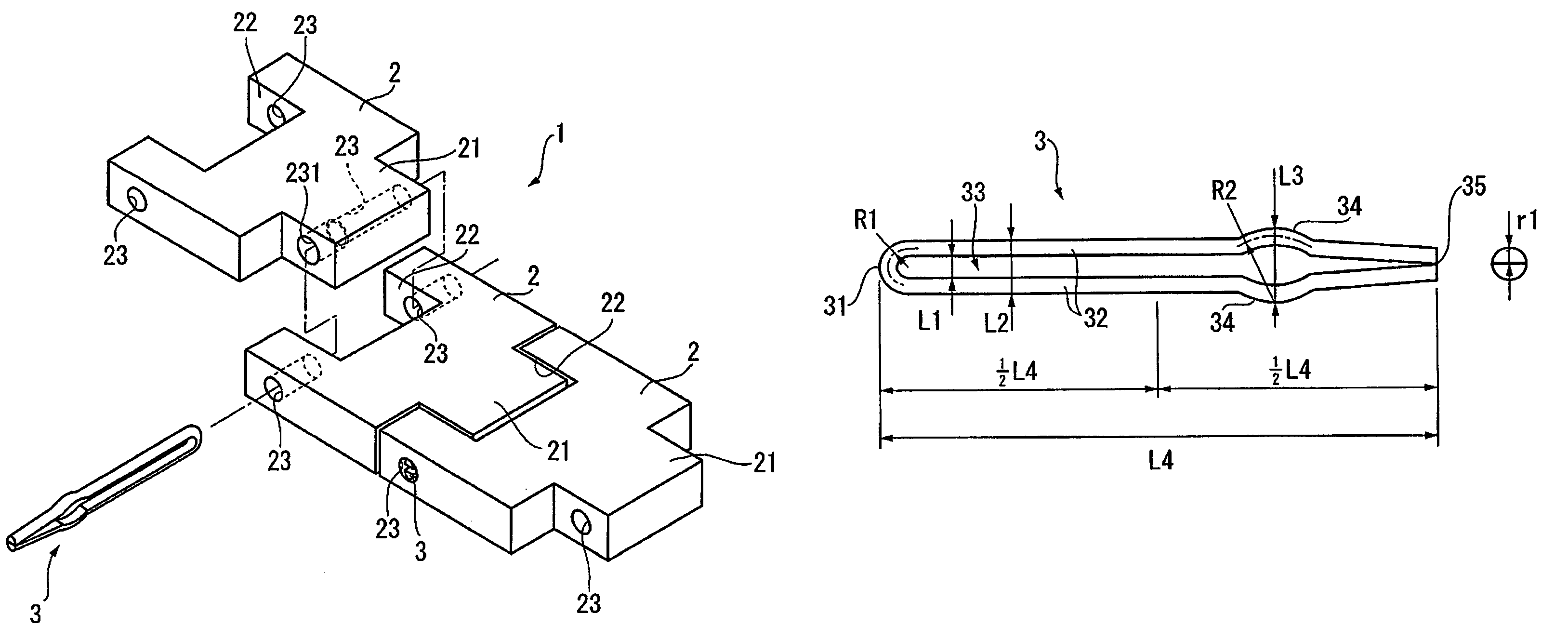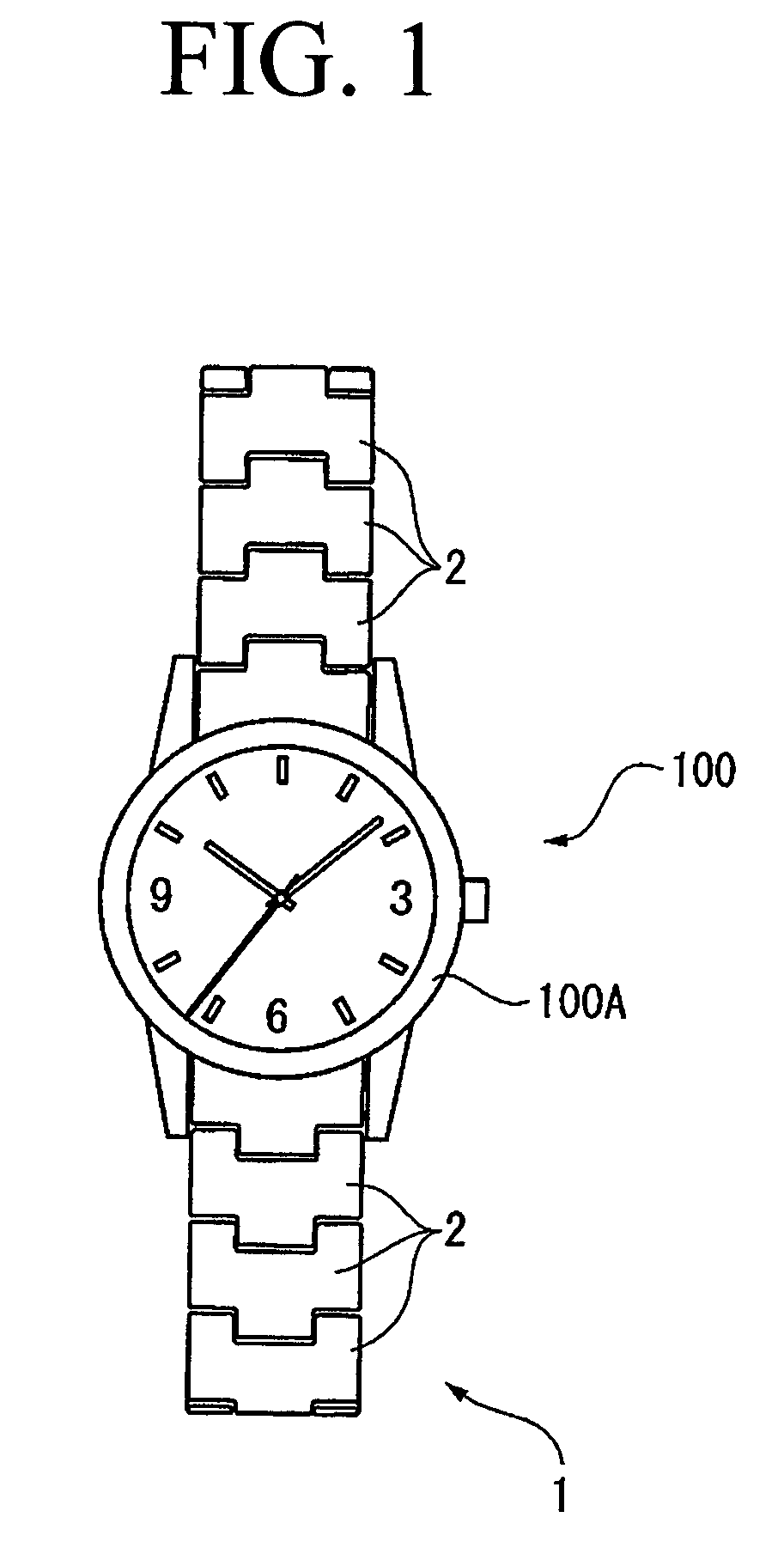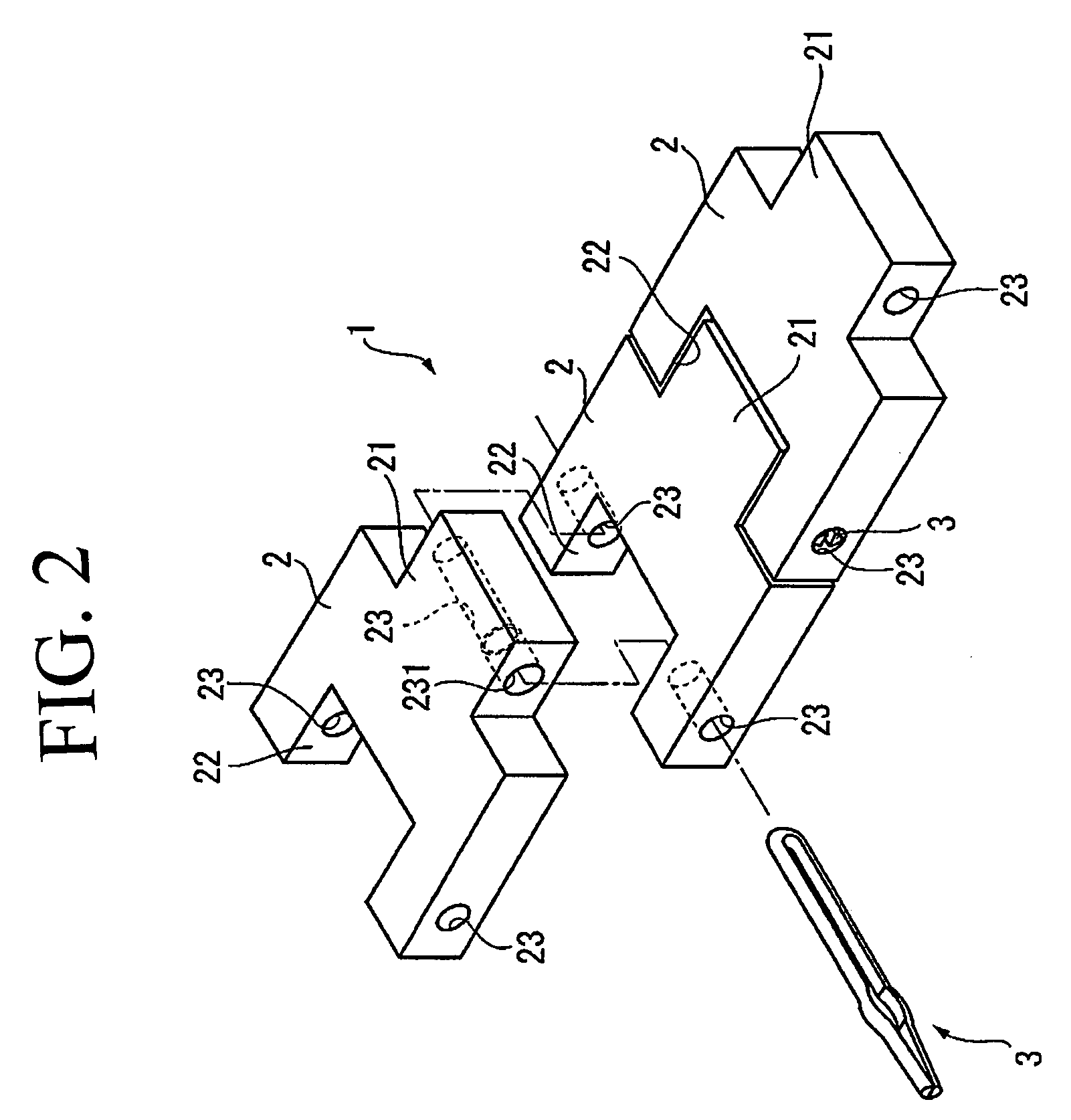Connector, band and watch
a technology of connectors and bands, applied in the direction of bracelets, chain elements, shackles, etc., can solve the problems of connectors falling out during use, the protruding dimensions change due to elastic deformation, etc., and achieve the effect of stable fixing for
- Summary
- Abstract
- Description
- Claims
- Application Information
AI Technical Summary
Benefits of technology
Problems solved by technology
Method used
Image
Examples
working examples
[0086]The following experiments were conducted to confirm the effects of the present invention.
working example 1
[0087]An experiment was conducted using the connecting pin 3 of the third embodiment (FIG. 8).
[0088]The distance L6 from the proximal ends of the protrusions 34 in the connecting pin 3 to the contact section 36A was 2.0 mm, and the distance L7 from the proximal ends of the protrusions 34 to the contact section 35 was 2.0 mm. Also, the distance L1 between the pair of linear parts 32 was 0.1 mm, and the entire length L4 of the connecting pin 3 was 14 mm. Furthermore, the difference between the distance L3 between the protrusions 34 and the diameter D1 of the inner periphery of the through-hole 23 was set to 0.1 mm.
[0089]The connecting pin 3 was repeatedly (seven times) inserted into and withdrawn from the through-hole 23, and the pulling force thereof was measured.
working example 2
[0090]An experiment was conducted using the connecting pin 3 shown in FIG. 13.
[0091]The distance L6 from the proximal ends of the protrusions 34 in the connecting pin 3 to the contact section 36A was 1.0 mm, and the distance L7 from the proximal ends of the protrusions 34 to the contact section 36D was 1.0 mm. Also, the difference between the distance L3 between the protrusions 34 and the diameter D1 of the inner periphery of the through-hole 23 was set to 0.08 mm. The conditions were otherwise the same as in Working Example 1.
PUM
 Login to View More
Login to View More Abstract
Description
Claims
Application Information
 Login to View More
Login to View More - R&D
- Intellectual Property
- Life Sciences
- Materials
- Tech Scout
- Unparalleled Data Quality
- Higher Quality Content
- 60% Fewer Hallucinations
Browse by: Latest US Patents, China's latest patents, Technical Efficacy Thesaurus, Application Domain, Technology Topic, Popular Technical Reports.
© 2025 PatSnap. All rights reserved.Legal|Privacy policy|Modern Slavery Act Transparency Statement|Sitemap|About US| Contact US: help@patsnap.com



